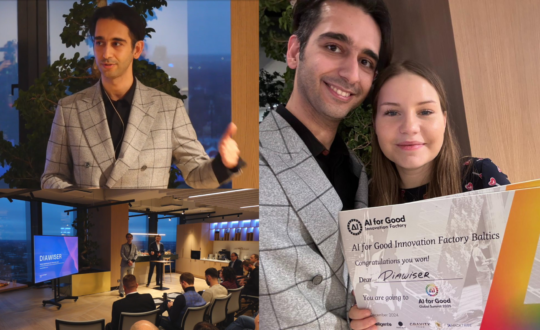At the Geneva International Motor Show yesterday, next to the exhibition halls showing off car manufacturers’ latest creations, industry experts and UN representatives gathered to discuss how they will fast-forward the automotive industry — and the world — into the future.
The Symposium on the Future Networked Car (FNC-2018), convened by the International Telecommunications Union (ITU) and the UN Economic Commission for Europe (UNECE), revealed how the automotive industry has been leveraging recent advances in information and communication technologies (ICT) to make transport systems safer, greener, and more intelligent. Participants highlighted the opportunities to be seized and challenges to be overcome for success.
Connectivity for safety
Curtis Hay, Technical Fellow at General Motors, described the recently launched Cadillac Super Cruise, which provides a hands-free driving experience.
“We need more standards, and the worldwide use of harmonized standards. Connected cars need a lot of power so new standards for 5G can be the basis for connected vehicle standards”–Christoph Nolte, DEKRA
A driver just needs to drive the car into a highway lane and, at the right time, push a button and let go, explained Hays, adding that the car performs breaking and collision avoidance. None of this would be possible without connectivity, he said.
RELATED: What’s next for the Future Networked Car? Top experts highlight key trends.
Indeed, connectivity is key to the safety of the Super Cruise, because this is what allows for the precise map updates, continuous corrections and diagnostics, and the emergency call that is triggered if the driver becomes incapacitated.
New partnerships for better services
One strong takeaway that repeatedly emerged from the discussions was that groundbreaking innovation has resulted from the increasing integration between the informatics, telecommunications, automotive, and even the financial sectors.
For example, Jason Ellis, a business development director for Qualcomm, explained that the semiconductor and telecoms equipment company has increasingly invested in serving the automotive industry, including the rollout of a new Cellular Vehicle-to-Everything (C-V2X) chipset to complement the connected-car ecosystem by helping to enhance range, reliability, speed, support, and cost efficiency.
In addition to building new partnerships, carmakers may need to redefine the way they view their own industry, experts said.
Jacques Bonifay is from Transatel, which provides connectivity solutions that can allow non-telecom players to become Mobile Virtual Network Operators (MVNOs). “Car manufacturers need to be MVNOs and have their own virtual mobile networks,” he said.
A need for global standards and policy frameworks
Christoph Nolte, Technical Director for DEKRA automotive solutions, emphasized the need for global standards to make global connectivity happen. “We have a fragmented standards environment. We need more standards, and the worldwide use of harmonized standards. Connected cars need a lot of power so new standards for 5G can be the basis for connected vehicle standards.”
RELATED: Future Networked Car 2018: What car will you drive tomorrow?
David Wong, Senior Technology and Innovation Manager for the Society of Motor Manufacturers and Traders in the UK, also noted that policy, regulation and standards together make up one of four major challenges he sees for connected-car development. Harmonized international regulations, insurance and liability frameworks, as well as regulations on data protection and sharing, and standards for 5G and the Internet of Things, are still needed before autonomous cars can become a reality, he said.
Cybersecurity
Since any part of the electronic system can be an attack point, many participants highlighted the urgent need to include cybersecurity considerations as early as possible in the design stage of the car and in all car systems.
Dvir Reznik, Sr. Marketing Manager for Automotive Cybersecurity at HARMAN, discussed the need to future-proof vehicles, deploy end-to-end cybersecurity solutions, set standards and guidelines and share information better.
We can’t wait three years to develop security, he said. “When you are developing connected cars now, autonomous vehicles now, you need to develop security measures now – from the bottom up.”
By Katya Halil












